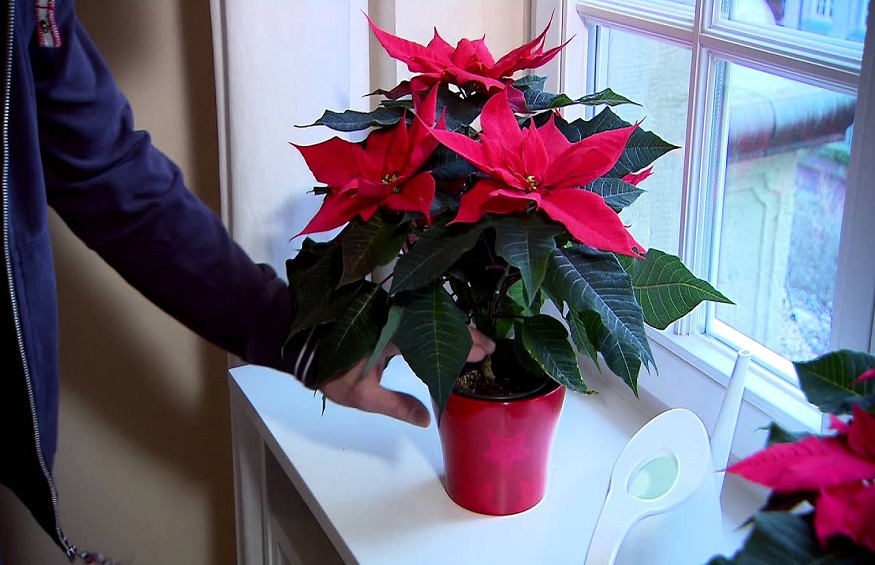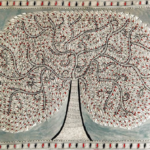
Introduction
Native to Mexico, poinsettias have become a global phenomenon. They have become America’s number one potted plant with more than 80 million sold annually. In the UK, 8 million are sold every year. If you want to decorate your yard with this plant, you can search for “landscape companies near me” and hire professionals for the job. Let’s check out all you need to know about poinsettias.
The Details
- Christmas decoration – Most widely available poinsettias are red. However, you can find beautiful orange, white, and cream variants for a higher price. The red star-shaped leaf bracts of poinsettias have come to be known as Christmas Stars in many languages. In Germany they are known as Weihnachtsstern, Stella di Natale in Italian, and Flowers of the Holy Knight in their native country, Mexico. Whether it’s clever marketing or organic, poinsettias have become an integral part of Christmas decorations across many households in North America and even in some countries across Europe.
- Those petals are leaves – When you see a poinsettia for the first time, you’ll be forgiven for mistaking the colorful bracts of the plant as flower petals. They do look like giant flowers made of bright and colorful petals. However, those colorful bracts are leaves. The flowers are tiny berry-like structures on each bract and are known as cyathia.
- Don’t buy poinsettias outside stores – Many supermarkets and shops put poinsettias along with colorful flowers outside the storefront to lure in customers or make customers go back into the store while they are on the way out. However, you should avoid buying poinsettias that sit outside the store or are set inside right beside automatic doors that open every half a minute. Poinsettias don’t need to deal with such dry and cold winds in their native environment.
While it won’t have any signs of damage, when you buy that poinsettia home, it may start dropping those bright colorful leaves, the highlighting feature of the plant. When you buy poinsettias, make sure that the plant has intact bracts. A healthy poinsettia plant has tight yellow buds between the bracts. They are the actual flowers of the plant and let you know about the quality and health of the plant with a glance.
- Check the soil – While it’s not possible in many situations, it’s best to check the soil quality of the poinsettia plant before buying. Touch the soil to check the moisture content. The soil shouldn’t be too dry or dripping wet. Those conditions show that the plant hasn’t received enough tender loving care.
Moreover, you don’t need to repot the poinsettia plant after buying it from the store. Poinsettias are planted in soils that have a pH range of 5.8 to 6.2. Usually, those soils are made from one part grit and three parts topsoil. This provides the plant’s roots with plenty of oxygen. That’s why you don’t need to re-pot it if you bought it during the winter season. You can keep it in the pot it came in.
- Wrap it with paper – When you decide on a good poinsettia plant from the store, wrap it with ample sheets of paper for the journey homes. Poinsettias are sensitive and may take damage from winds that have a temperature of 52 degrees or less. They aren’t used to that kind of temperature in their native setting. When you wrap it with layers of paper, they act as insulation against the wind and don’t lead to premature loss of leaves after you bring them home.
- Don’t go overboard with water – Poinsettias are not used to a lot of water. They don’t even need a lot of it to grow healthy in their native setting. You need to keep that in mind while watering poinsettias. The root bale of the plant should not be drenched or too dry. Overwatering the plant can cause waterlogging and cause root rot. The last thing you want after buying a new poinsettia plant is to see it rot and die inside your home.
Only water your poinsettia when the soil is noticeably dry. You can inspect the condition of the soil by dipping your finger in it. The topsoil should be quite dry for you to water the plant. If you keep the plant in a dry room, it will lose moisture more quickly and you’ll need to water the plant more frequently. It’s also important to discard excess water from the saucer the pot is sitting in.
- Inspect leaves – One of the best ways to check the health of your poinsettia plant is to develop a habit of inspecting the leaves. If the leaves start turning yellow or fall off, you’re probably watering it wrong. Otherwise, it may mean that the plant isn’t getting enough nitrogen from the soil. In that case, you’ll need to re-pot the plant after amending the soil.
- Right temperature – Poinsettias need plenty of light and warmth. You can keep it close to a radiator. However, keep it away from open doorways, fireplaces, and open windows so that the plant doesn’t dry out too quickly. The ideal temperature for poinsettias is between 60 to 72 degrees. That means you can easily keep these plants inside your bedrooms and living rooms.
Keep the plant out of direct sunlight to prevent the leaves from burning. However, this shouldn’t be a concern during the winter season. You can keep them beside a closed window during the winter. To make the poinsettia last through the next year, you’ll need to prune it during April up to 4 inches and maintain it at a temperature of around 55 degrees.
Conclusion
Poinsettias have become famous across the globe and have become an integral part of Christmas decorations across many countries. You can also have this plant in your yard at other times of the year to make it more beautiful. To do that, you can get help from professionals by searching for “landscape companies near me”.






Leave a Reply
You must be logged in to post a comment.